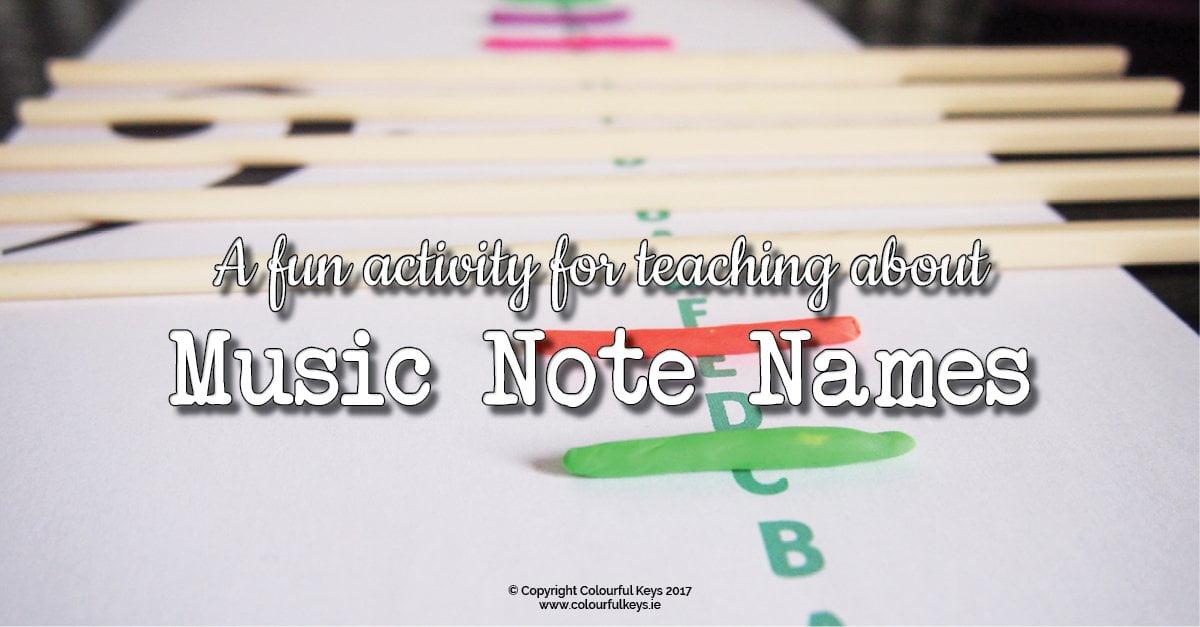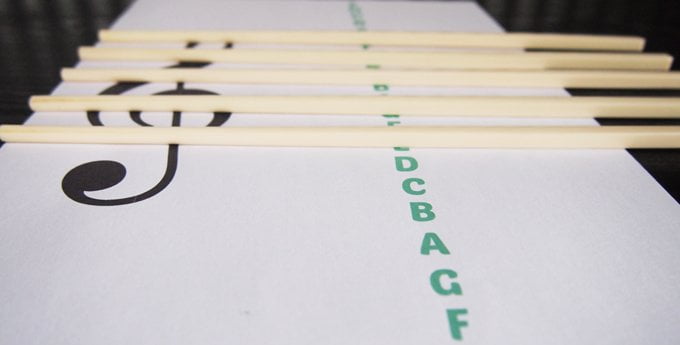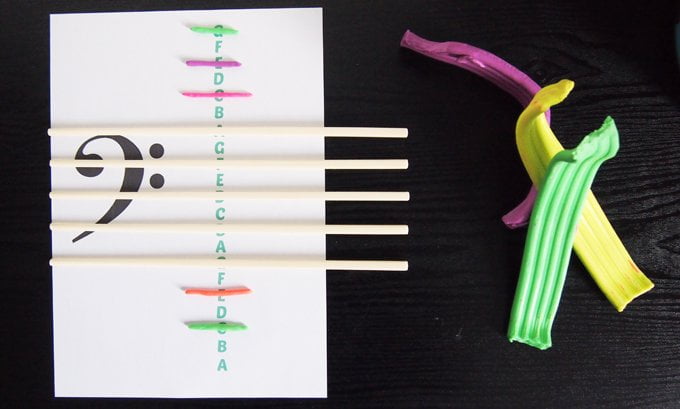Ledger lines are a useful tool. But new piano students won’t always see them that way. Our students need to see how necessary and valuable these little lines are.

The best way to do this is not to tell your students but to explore the staff with them. Getting to experience the structure of music notation with activities like this one will make the understanding stick in your students’ minds.
And then the flipped learning video will further reinforce the learning at home. Add some pages from a theory workbook (like Thinking Theory) and the ledger line notes are not going to be forgotten anytime soon.
Plasticine and Chopstick Activity

Once you’ve downloaded and printed the blank staff sheet, all you need are chopsticks and plasticine (or playdough, modelling clay, etc.) to use it.
- Ask your student where the chopsticks should go to make the lines of the staff. Help them as needed and give young students sheet music to use as a reference.
- Once they have their chopstick staff ask them about those other notes floating outside the lines. What do they think we need to do to give those notes a home?
- This is where the plasticine comes in. Your student should roll out ledger lines to add to the chopstick staff in the clay. Explain where to put them as needed, but let your student try it first and explore the staff together.

This little exercise is one more way that students can see the staff structure in a new light. For more ideas on how to do this, read 13 Note Reading Strategies to Recover from Grand Staff Confusion or How to Introduce the Grand Staff BEFORE You Introduce the Grand Staff.
Download the Blank Staff Printable
Enter your details in this box to get the printable for the chopsticks and plasticine teaching activity.

Subscribe to the newsletter and get the chopstick ledger line sheet
Enter your details to subscribe to the newsletter for piano teachers with information, tips and offers.
I hate spam as much as you do! I will only send you emails related directly to piano teaching and you can unsubscribe at any time.
Vibrant Music Teaching members, you can access this resource inside the VMT library. Not a member yet? Find out more about becoming a member here.
Landmark Notes Flipped Learning Video
This video introduces the five landmark notes high C, treble C, treble G, middle C, treble F, bass C and low C. It’s important that piano students have these extra landmark notes on the ledger lines so that they can grasp onto a point of reference wherever they are on the staff.
Feel free to send this video to parents for their kids to watch, use it in group lessons or as part of lab time. It’s designed to be clear and concise so that students can watch it – and then get on with some writing work for reinforcement.
This video correlates directly to Thinking Theory Book Two page 3. View the full Thinking Theory series here and see what makes these workbooks so special.
More Flipped Thinking Theory
If you liked this music theory video, you might also like these others:
- Flipped Basic Note Values
- Flipped Beginning Solfa
- Flip and Gameify Landmark Notes
- Flipped Time Signatures
- Flipped Note & Rest Values
- Flipped Dynamics
- Flipped Accidentals, Tones & Semitones
- Flipped Articulation Marks
- Flipped C and G Major Scales
- Flipped Tempo Marks
How do you explain the ledger lines?
Do you have a go-to method for getting your students to remember these notes? Share it with us in the Vibrant Music Studio Teachers community on Facebook.

Nicola-
Just to clarify…. I am confused as to why you say “middle C is one ledger line ABOVE the treble clef and BELOW the bass clef”…. isn’t that backwards?
Or do I need more coffee….
Nope, you’re right, that’s my goof Laura. Isn’t it funny how no one picked up on that til now? Good catch!